Abstract
As dental implant treatment becomes popular for both partial and complete edentulous patients, old people with complex systemic diseases also tend to prefer implant-assisted-overdenture or implant-supported-fixed prostheses to conventional complete denture. In this case, 77-year-old female who was on medication for hypertension and osteoporosis and paralyzed on right side due to stroke visited for implant-assisted-overdenture on lower jaw. After oral and radiographic examination, root-assisted magnet overdenture on upper jaw and implant-assisted magnet overdenture on lower jaw are planned. Consequently, overdentures using self-adjusting magnetic attachment(SA) system on both jaws resulted in recovering satisfying function and retention, which is enable to insert and remove with only one hand.
Go to : 
REFERENCES
1. Kuoppala R, Nä pä nkangas R, Raustia A. Quality of Life of Patients Treated With Implant-Supported Mandibular Overdentures Evaluated With the Oral Health Impact Profile (OHIP-14): a Survey of 58 Patients. J Oral Maxillofac Res. 2013; 4:e4.

2. Kim YK, Yun PY. Dental implant therapy in the geriatric and medically compromised patients: A study on the early complications. J Korean Dent Assoc. 2004; 42:798–806.
3. Song SI. Considerations for implants in the geriatric patient: review of the literature. J Dent Implant Res. 2014; 33:35–41.
4. Schimmel M, Leemann B, Herrmann FR, Kiliaridis S, Schnider A, Müller F. Masticatory function and bite force in stroke patients. J Dent Res. 2011; 90:230–4.

5. Mü ller F, Duvernay E, Loup A, Vazquez L, Herrmann FR, Schimmel M. Implant-supported mandibular overdentures in very old adults: a randomized controlled trial. J Dent Res. 2013; 92:154S–60S.
6. Fontijn-Tekamp FA, Slagter AP, Van Der Bilt A, Van 'T Hof MA, Witter DJ, Kalk W, Jansen JA. Biting and chewing in overdentures, full dentures, and natural dentitions. J Dent Res. 2000; 79:1519–24.

7. Feine JS, Carlsson GE, Awad MA, Chehade A, Duncan WJ, Gizani S, Head T, Lund JP, MacEntee M, Mericske-Stern R, Mojon P, Morais J, Naert I, Payne AG, Penrod J, Stoker GT Jr, Tawse-Smith A, Taylor TD, Thomason JM, Thomson WM, Wismeijer D. The McGill Consensus Statement on Overdentures. Montreal, Quebec, Canada. May 24-25, 2002. Int J Prosthodont. 2002; 15:413–4.
8. Thomason JM, Kelly SA, Bendkowski A, Ellis JS. Two implant retained overdentures-a review of the literature supporting the McGill and York consensus statements. J Dent. 2012; 40:22–34.

9. Carlsson GE. Implant and root supported overdentures - a literature review and some data on bone loss in edentulous jaws. J Adv Prosthodont. 2014; 6:245–52.

10. Chadha GK, Ahmadieh A, Kumar S, Sedghizadeh PP. Osseointegration of dental implants and osteonecrosis of the jaw in patients treated with bisphosphonate therapy: a systematic review. J Oral Implantol. 2013; 39:510–20.

11. Montoya-Carralero JM, Parra-Mino P, Ram l′rez-Ferna′ndez P, Morata-Murcia IM, Mompea′n-Gamb l′n Mdel C, Calvo-Guirado JL. Dental implants in patients treated with oral bisphosphonates: a bibliographic review. Med Oral Patol Oral Cir Bucal. 2010; 15:e65–9.

Go to : 
 | Fig. 3.(A) Magnetic keepers on implants (Magden; Shinwon Dental., Inc, Seoul, Korea), (B) Root keepers (Magfit-RK; Aichi Steel Corp, Tokai-shi, Japan) on endodontically treated roots and resin build-up in dome shape. |
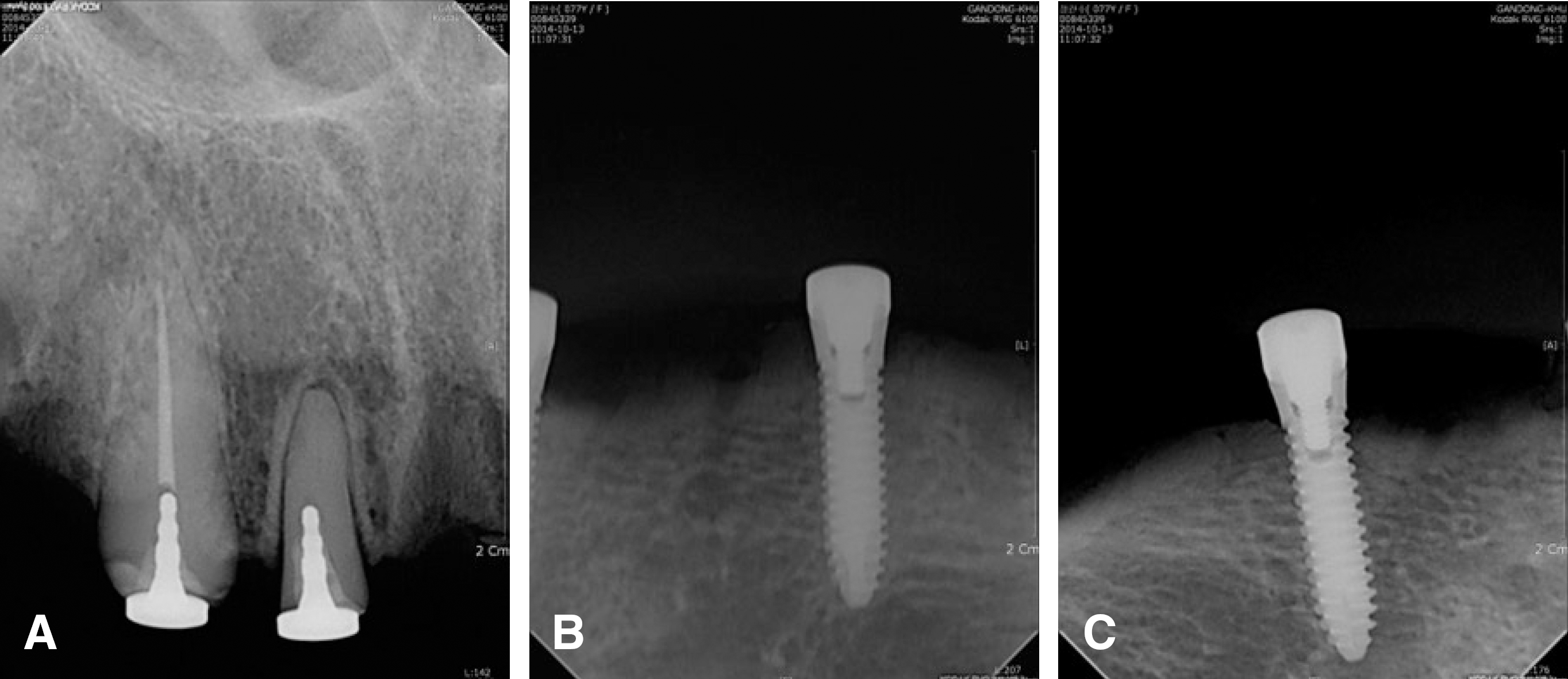 | Fig. 7.Radiographs on 3 months after implant placement and extraction. (A) Endodontically treated roots with Root Keepers (Magfit-RK; Aichi Steel Corp, Tokai-shi, Japan) on upper jaw, (B, C) Implants (Magden; Shinwon Dental., Inc, Seoul, Korea) with magnetic keepers on lower jaw. |
 | Fig. 9.A patient was satisfied with both dentures with function and acceptable retention even when wide opening. (A) smiling, (B) wide opening. |




 PDF
PDF ePub
ePub Citation
Citation Print
Print


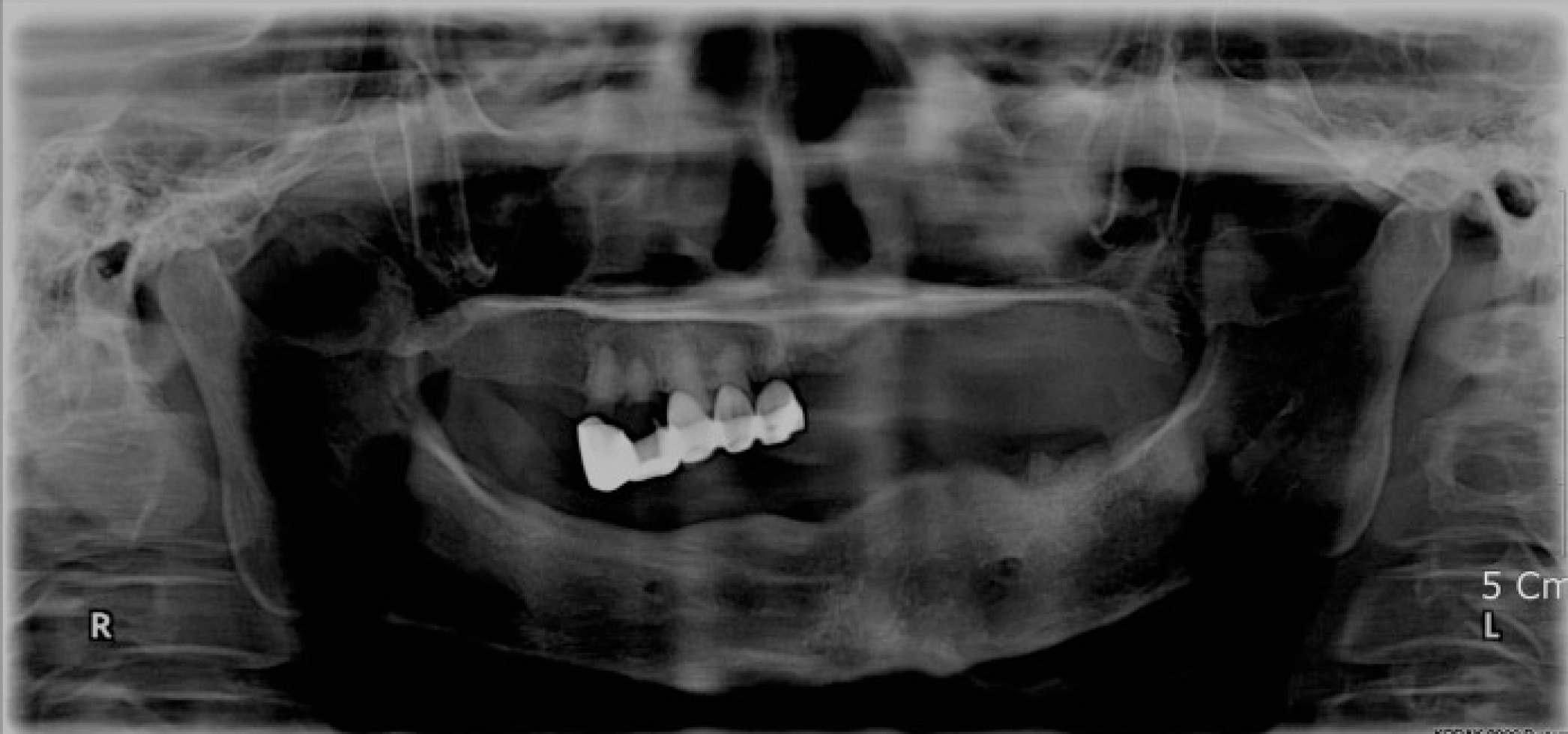


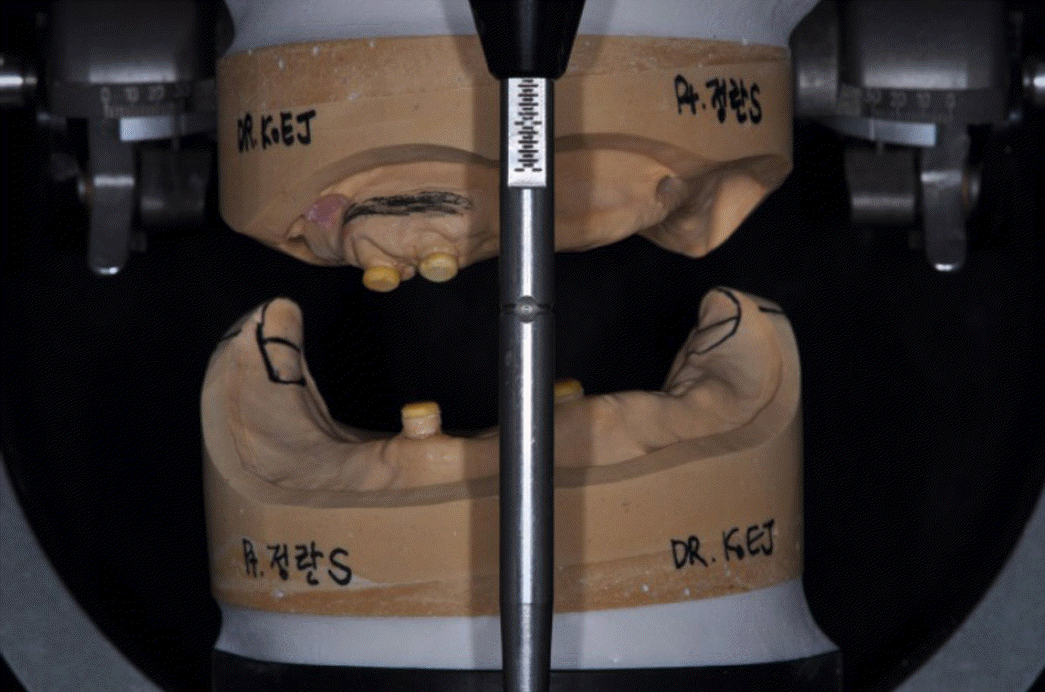
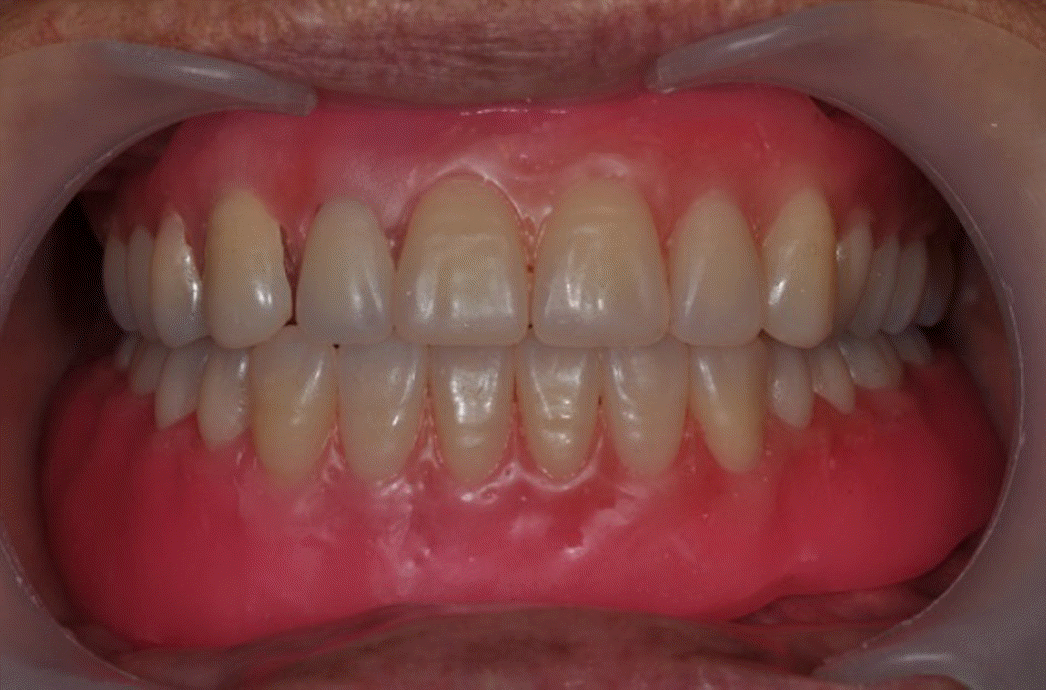

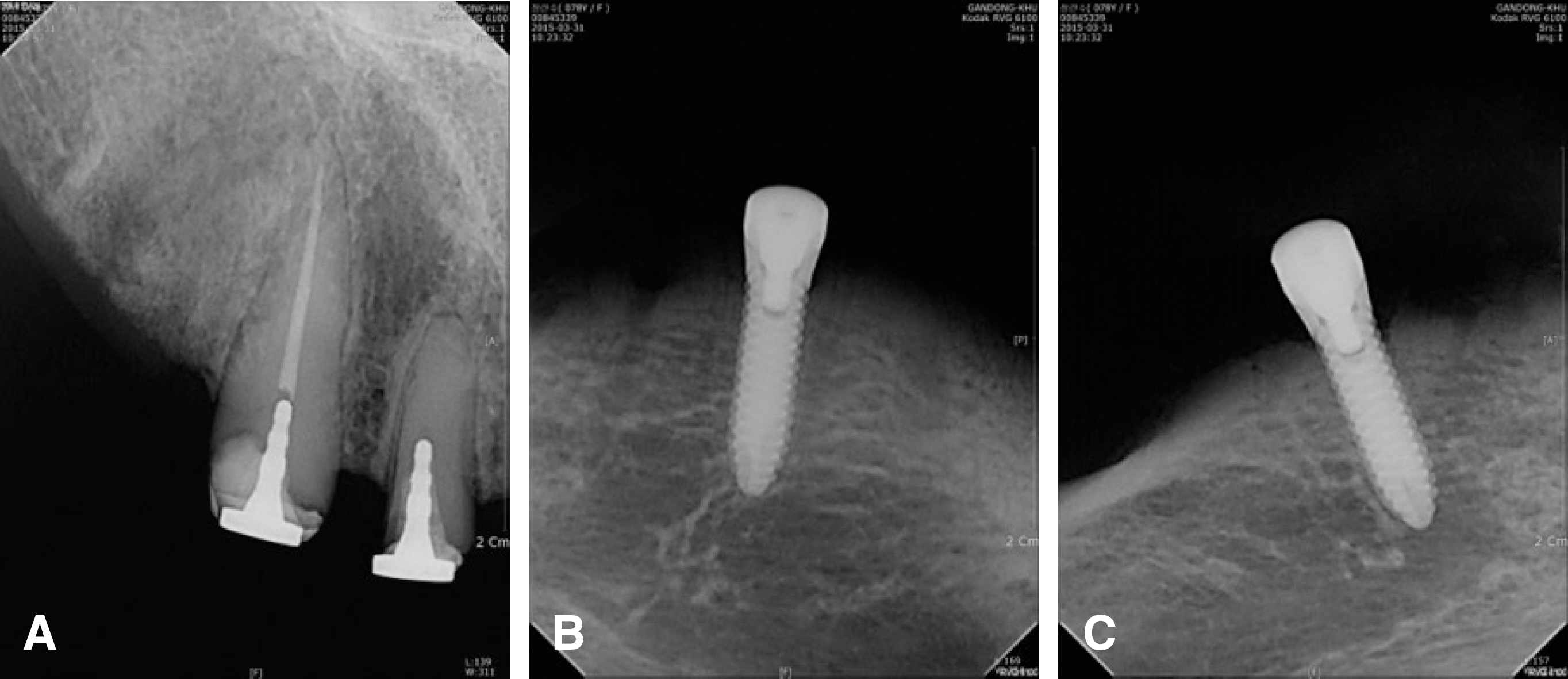
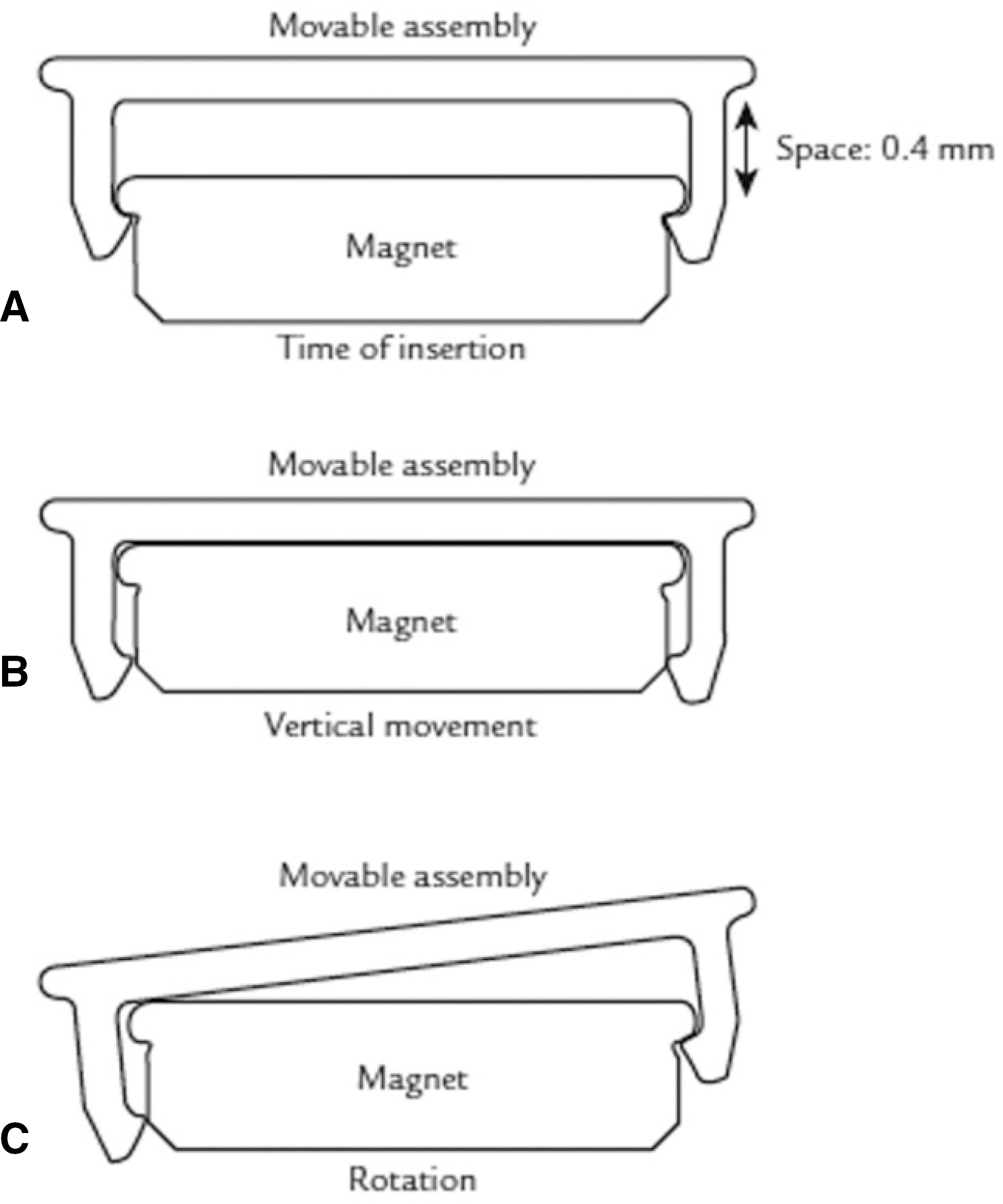
 XML Download
XML Download